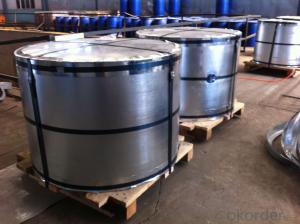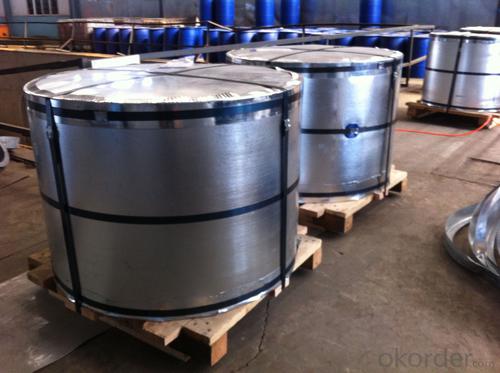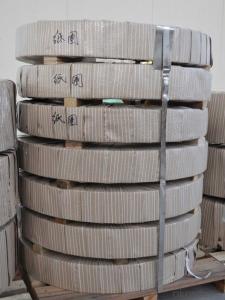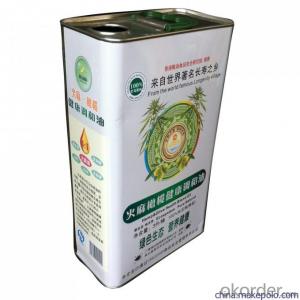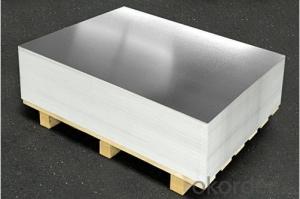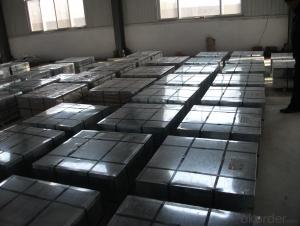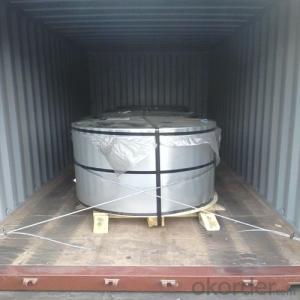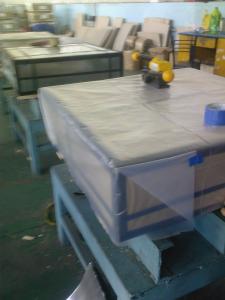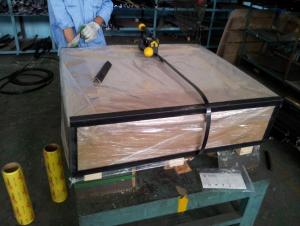ETP for Metal Package of Industrial Paint Useage
- Loading Port:
- Shanghai
- Payment Terms:
- TT OR LC
- Min Order Qty:
- 25 m.t.
- Supply Capability:
- 30000 m.t./month
OKorder Service Pledge
OKorder Financial Service
You Might Also Like
Specification
1.Structure of ETP for Metal Package of Industrial Paint Useage Description
Electrolytic Tinplate undoubtedly enjoys the pride of place as a packaging medium especially for food. It owes its unique position to its "nine layer sandwich structure", each of which contributes to its eminence as a packing material. The steel base of electrolytic tinplate provides the necessary strength and formability for can fabrication. The tin-iron alloy layer provides the bond between the steel and free tin layer. The free tin layer is not only responsible for the attractive bright finish and ease of solderability but is also non-toxic- a factor of vital importance in food packaging!
2.Main Features of the ETP for Metal Package of Industrial Paint Useage
Tinplate, thin steel sheet with a coating of tin applied either by dipping in molten metal or by electrolytic deposition; almost all tinplate is now produced by the latter process. Tinplate made by this process is essentially a sandwich in which the central core is strip steel. This core is cleaned in a pickling solution and then fed through tanks containing electrolyte, where tin is deposited on both sides. As the strip passes between high-frequency electric induction coils, it is heated so that the tin coating melts and flows to form a lustrous coat.
3.ETP for Metal Package of Industrial Paint Useage Images
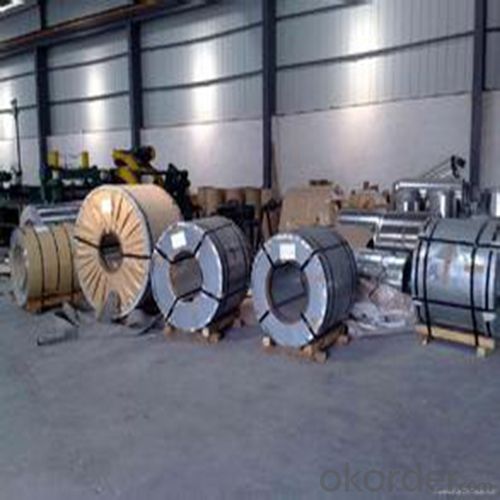
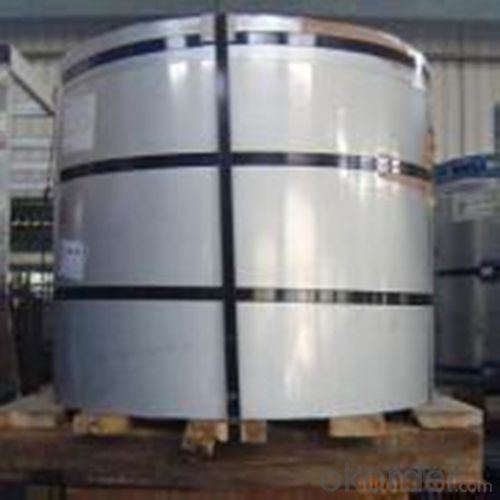
4.ETP for Metal Package of Industrial Paint Useage Specification
Specification of :
Standard: ISO 11949 -1995, GB/T2520-2000,JIS G3303,ASTM A623, BS EN 10202
Material: MR,SPCC
Thickness:0.15mm - 0.50mm
Width: 600mm -1150mm
Temper: T1-T5
Annealing: BA & CA
Coil Inner Diameter: 508mm
Weight: 6-10 tons/coil 1~1.7 tons/sheets bundle
Passivation:311
Oil: DOS
Surface: Finish,bright,stone,matte,silver
5.FAQ of ETP for Metal Package of Industrial Paint Useage
- What is tinning and how does it work?
Tinning is the process of thinly coating sheets of wrought iron or steel with tin, and the resulting product is known as tinplate. It is most often used to prevent rust.
- Do you only have prime quality tinplate?
We can supply both prime and second quality tinplate.
- Q: How does tinplate packaging contribute to product protection against leakage?
- Tinplate packaging contributes to product protection against leakage primarily due to its durable and corrosion-resistant properties. The tin coating on the steel substrate prevents any contact between the product and the surrounding environment, minimizing the risk of leakage. Additionally, tinplate packaging is often manufactured using advanced sealing techniques, ensuring airtight and leak-proof closures. Overall, the robust nature of tinplate packaging serves as a reliable barrier, safeguarding the product from potential leakage and preserving its quality.
- Q: What are some common tinplate products?
- Some common tinplate products include food and beverage cans, aerosol cans, paint cans, metal packaging for cosmetics and personal care products, and metal containers for various industrial applications.
- Q: What are the different types of tinplate?
- There are generally three types of tinplate: Single Reduced (SR), Double Reduced (DR), and Electrolytic Tinplate (ETP).
- Q: What are the main factors influencing the profitability of tinplate manufacturers?
- The main factors influencing the profitability of tinplate manufacturers are the cost of raw materials, such as tin and steel, as well as the price at which the finished tinplate products can be sold. Other factors include production efficiency, economies of scale, competition within the industry, and the overall demand for tinplate in various sectors like packaging, construction, and automotive. Additionally, factors like government regulations, technological advancements, and environmental sustainability practices can also impact the profitability of tinplate manufacturers.
- Q: What are the different ways to open tinplate containers?
- There are several different ways to open tinplate containers, depending on their design and intended purpose. Common methods include using a can opener, pulling a tab or ring pull, twisting off a lid, or using a tool like a pry bar or knife to pry the lid off.
- Q: What are the common closure mechanisms for tinplate containers?
- The common closure mechanisms for tinplate containers include screw-on lids, snap-on lids, and press-on lids.
- Q: What is the cost of tinplate compared to other packaging materials?
- The cost of tinplate is generally higher compared to other packaging materials such as aluminum, paper, or plastic. Tinplate is a durable and versatile material, but its higher cost is primarily due to the production process involving coating steel with a thin layer of tin. While other materials may offer a more cost-effective solution for certain applications, tinplate's unique properties and premium image make it a preferred choice for certain industries like food and beverages, cosmetics, and pharmaceuticals. Ultimately, the cost of tinplate should be evaluated in relation to the specific needs and requirements of the packaging project.
- Q: Can tinplate be used for packaging frozen foods?
- Yes, tinplate can be used for packaging frozen foods. It has excellent durability and resistance to temperature fluctuations, making it suitable for preserving the quality and freshness of frozen food products. Additionally, tinplate offers a high level of protection against moisture, light, and oxygen, further ensuring the integrity of the frozen food during storage and transportation.
- Q: What are the benefits of using tinplate for roofing?
- One of the main benefits of using tinplate for roofing is its durability and longevity. Tinplate is highly resistant to corrosion and can withstand harsh weather conditions, making it a reliable option for long-term use. Additionally, tinplate is lightweight, making installation easier and more efficient. It also provides excellent insulation, helping to regulate temperature and reduce energy costs. Furthermore, tinplate roofing is aesthetically pleasing, offering a sleek and modern look to any building.
- Q: What are the different ways to recycle tinplate closures?
- There are several different ways to recycle tinplate closures. One way is to separate the tinplate from other materials, such as plastic or glass, and then melt it down to create new tinplate products. Another method is to crush the closures into small pieces and use them as aggregate in construction materials like concrete. Tinplate closures can also be reprocessed and used in the production of new closures or other metal products. Additionally, recycling facilities may accept tinplate closures and send them to specialized recycling centers for further processing.
Send your message to us
ETP for Metal Package of Industrial Paint Useage
- Loading Port:
- Shanghai
- Payment Terms:
- TT OR LC
- Min Order Qty:
- 25 m.t.
- Supply Capability:
- 30000 m.t./month
OKorder Service Pledge
OKorder Financial Service
Similar products
Hot products
Hot Searches
Related keywords
